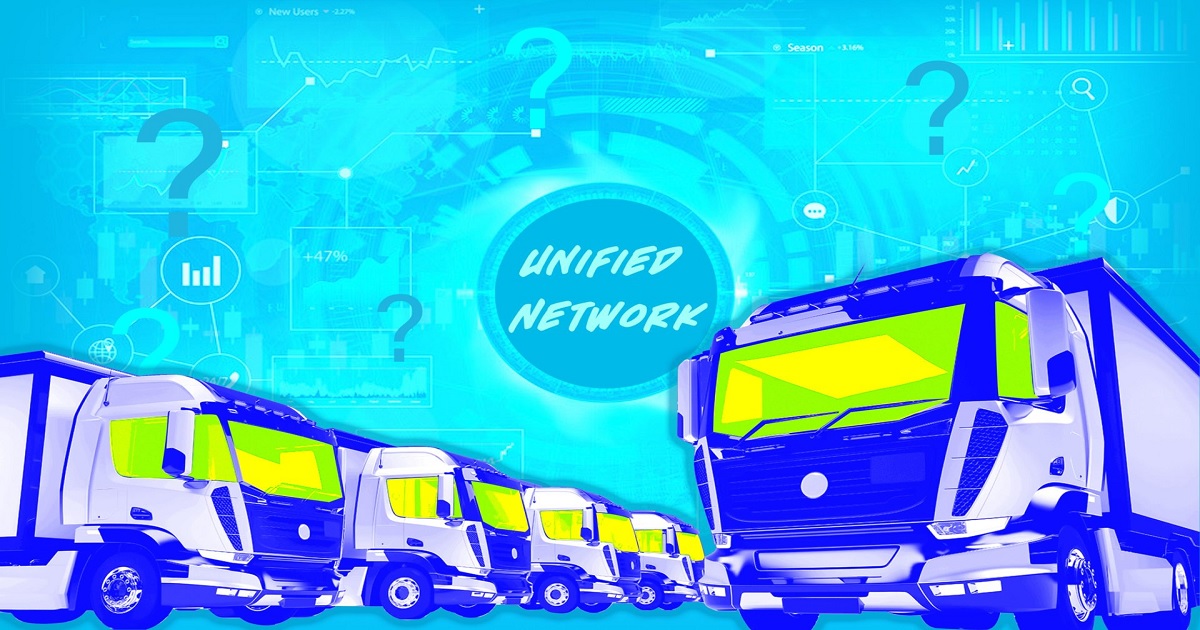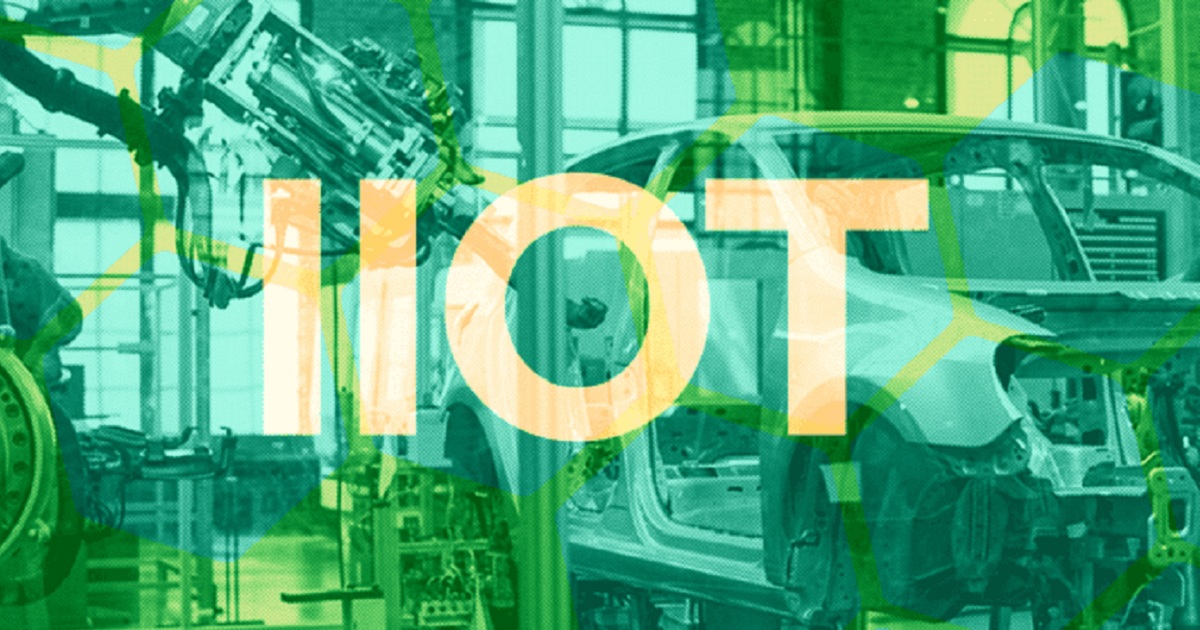
IoT Security
Article | June 28, 2023
As consumer demands evolve, fleet managers are turning to IoT to deliver products faster and more efficiently. The progress being made in edge computing represents the full potential of IoT: the power of data on the move. However, operating on the edge also reveals some of IoT’s greatest challenges: maintaining network security as the number of endpoints multiplies; rethinking traditional business models as industries become increasingly interdependent; and, perhaps most importantly, establishing a seamless, reliable network across borders, cultures, and regulatory environments.
Read More

Enterprise Iot
Article | July 20, 2023
In the wake of the COVID-19 pandemic, manufacturing is roaring back to life, and with it comes a renewed focus on Digital Transformation initiatives. The industry stands on the doorstep of its much-anticipated renaissance, and it’s clear that manufacturing leaders need to not only embrace but accelerate innovation while managing critical processes like increasing capacity while maintaining product quality. Effective collaboration will be key to doing both well, but it’s even more critical as workforces have gone and are still largely remote.
As the virus swept the globe, it became apparent quickly that there would be winners and losers. Many manufacturers were caught off-guard, so to speak. Before manufacturing’s aforementioned reckoning, the industry had already been notorious for its slow adoption of the digital, data-centric mindset that has transformed other industries.
Read More

IoT Security
Article | July 5, 2023
Building resilient IoT networks: Exploring the top technologies for enhancing IoT security and protecting as well as safeguarding against evolving cyber threats in the interconnected era of Industry 4.0.
Contents
1. What is Network Resilience and Why is it Needed?
1.1 Continuous Operation
1.2 Mitigating Security Threats
1.3 Data Protection
1.4 System Availability
1.5 Risk Management
1.6 Regulatory Compliance
2. Factors to Consider for Network Resilience
3. Top Trends in IoT Security
3.1 Zero Trust and AI
3.2 Supply Chain Security
3.3 Network Segmentation and Segregation
3.4 Over-the-Air (OTA) Updates
3.5 Device Authentication and Authorization
3.6 Software-defined Networking (SDN) Security
3.7 Identity and Access Management (IAM)
4. Conclusion
1. What is Network Resilience and Why is it Needed?
Network resilience refers to the ability of an IoT network to withstand and recover from disruptions, attacks, or failures while maintaining its essential functions. It involves implementing measures to ensure the network remains available, reliable, and secure, even during security threats or unexpected events.
Ensuring network resilience is a critical aspect of IoT network security. Network resilience refers to the ability of an IoT network to withstand and recover from disruptions, attacks, or failures while maintaining its essential functions. Ensuring network resilience in IoT network security is crucial for the following reasons:
1.1 Continuous Operation
IoT networks often support critical applications and services that require uninterrupted operation. Network resilience ensures that these applications can continue functioning even during disruptions, such as network failures or security incidents. It minimizes downtime and ensures business continuity.
1.2 Mitigating Security Threats
IoT networks are susceptible to various cybersecurity threats, including malware, unauthorized access, or Distributed Denial of Service (DDoS) attacks. Network resilience measures help mitigate these threats by implementing security controls, monitoring network traffic, and enabling prompt detection and response to security incidents.
1.3 Data Protection
IoT devices generate and transmit vast amounts of sensitive data. Network resilience safeguards data integrity, confidentiality, and availability by implementing secure communication protocols, encryption mechanisms, and access controls. It ensures that data remains protected even during network disruptions or security breaches.
1.4 System Availability
IoT systems often rely on real-time data processing and communication. Network resilience ensures that data flows seamlessly, allowing IoT devices to exchange information and execute tasks without interruptions. It supports critical functions such as monitoring, control, and decision-making processes.
1.5 Risk Management
Building network resilience helps organizations effectively manage risks associated with IoT deployments. By identifying vulnerabilities, implementing protective measures, and having response plans in place, organizations can minimize the impact of security incidents, reduce financial losses, and maintain the trust of stakeholders.
1.6 Regulatory Compliance
Many industries have specific regulations and standards governing the security and resilience of IoT networks. By ensuring network resilience, organizations can demonstrate compliance with these requirements, avoiding penalties, legal issues, and reputational damage.
2. Factors to Consider for Network Resilience
Implementing redundancy and failover mechanisms within the network infrastructure helps mitigate the impact of single points of failure. This involves deploying backup systems, redundant network paths, and failover mechanisms to ensure continuous operation despite a failure or attack. Traffic Monitoring and Anomaly Detection for Continuous network traffic monitoring helps identify abnormal patterns or behaviours that may indicate security threats or attacks. By leveraging intrusion detection and prevention systems (IDPS) and traffic analysis tools, organizations can promptly detect and respond to network anomalies, safeguarding network resilience. Moreover, segmentation and Isolation: Dividing the IoT network into segments or zones and isolating critical devices or systems from less secure ones enhances network resilience. Implementing proper network segmentation, VLANs (Virtual Local Area Networks), or software-defined networking (SDN) enables effective control, containment, and mitigation of security incidents.
DDoS attacks significantly threaten network resilience by overwhelming the network's resources and causing service disruption. Deploying robust DDoS protection measures, such as traffic filtering, rate limiting, and traffic diversion, helps mitigate the impact of such attacks and ensures network availability. Incident Response and Establishing comprehensive incident response and recovery plans specific to IoT network security incidents is crucial. These plans should outline clear procedures, roles, and responsibilities to efficiently respond to and recover from security breaches or disruptions, minimizing downtime and maintaining network resilience. In addition, regular penetration testing, vulnerability assessments, and network audits help identify weaknesses and vulnerabilities in the IoT network infrastructure. Promptly addressing these issues through patches, updates, and security configuration adjustments strengthens network resilience by proactively addressing potential security risks.
By implementing these measures, organizations can enhance the resilience of their IoT networks, ensuring continuous operation, prompt threat detection, and effective response to security incidents. Network resilience plays a vital role in maintaining IoT systems' integrity, availability, and reliability in the face of evolving security challenges.
3. Top Trends in IoT Security
3.1 Zero Trust and AI
Zero Trust is an emerging security concept that assumes no implicit trust towards devices or users, even if they are already inside the network perimeter. Implementing Zero Trust principles in IoT networks can help mitigate the risks associated with compromised devices and unauthorized access for IoT security. In order to bolster cybersecurity measures, adopting a zero trust approach. Effectively addressing cybersecurity challenges entails not merely technological solutions but a comprehensive organizational strategy rooted in cultural and policy frameworks. Emphasizing the zero trust concept underscores the importance of policy implementation throughout the entire organization, complementing technological measures.
3.2 Supply Chain Security
The complex and interconnected nature of IoT supply chains introduces security risks. The supply chain for IoT devices involves multiple stages, including device manufacturing, software development, distribution, and deployment. Each stage presents potential security risks that can compromise the integrity and security of the IoT network. This includes adopting secure supply chain management practices, such as verifying the security practices of suppliers and manufacturers, and establishing clear security requirements and standards for the entire supply chain. Conducting third-party risk assessments helps evaluate the security posture of suppliers and vendors to identify any potential vulnerabilities or weaknesses.
3.3 Network Segmentation and Segregation
In IoT security, minimizing the potential impact of a compromised IoT device is crucial, and network segmentation and segregation play a vital role in achieving this goal. Network segmentation involves dividing the network into separate zones or segments, based on factors such as device type, functionality, or security requirements. The containment strategy helps minimize the impact of a security breach by isolating compromised devices and preventing lateral movement within the network.
3.4 Over-the-Air (OTA) Updates
Software updates play a critical role in maintaining the integrity and security of IoT devices. IoT devices frequently require updates to address software bugs, patch vulnerabilities, or introduce new features. Over-the-Air (OTA) update mechanisms are being enhanced with robust security measures to ensure the secure delivery and installation of updates. Code signing is a prevalent practice where updates are digitally signed with cryptographic keys to verify the authenticity and integrity of the software. Secure boot is another important mechanism that establishes a chain of trust during the device boot-up process, ensuring that only authorized and tamper-free software is loaded onto the device.
3.5 Device Authentication and Authorization
The increasing number of IoT devices poses a significant challenge in ensuring secure and trusted authentication and authorization. Two-factor authentication (2FA), for example, adds an extra layer of protection by requiring users or devices to provide two separate forms of authentication, such as a password and a unique code sent to a mobile device. Digital certificates, on the other hand, enable secure and trusted device authentication by leveraging public key infrastructure (PKI) technology. Each IoT device is issued a unique digital certificate, which serves as a digital identity, allowing for secure communication and verification of device authenticity.
3.6 Software-defined Networking (SDN) Security
Securing Software-defined Networking (SDN) environments is paramount to protect IoT deployments. SDN offers centralized control and management of network resources, providing flexibility and scalability. This ensures that only authorized entities can access and make changes to the SDN infrastructure, preventing unauthorized access and configuration changes. Additionally, continuous traffic monitoring and analysis enable the detection of suspicious activities and potential security breaches. Encryption IoT standards and protocols should be employed to secure communication between the SDN controller, switches, and IoT devices, safeguarding data privacy and integrity. Network segmentation within the SDN environment helps limit the impact of security breaches, reducing the attack surface.
3.7 Identity and Access Management (IAM)
Implementing IAM solutions, such as role-based access control (RBAC) and multi-factor authentication (MFA), within IoT networks significantly enhances network security. IAM ensures that only authorized individuals can access and interact with IoT devices and systems. RBAC enables administrators to assign specific access privileges based on user roles and responsibilities, reducing the risk of unauthorized access. Additionally, incorporating MFA adds an extra layer of security by requiring users to provide multiple forms of authentication, such as a password and a unique token or biometric verification. This significantly reduces the risk of unauthorized access even if a user's credentials are compromised.
4. Conclusion
The technologies discussed in this article play a crucial role in enhancing IoT network security and resilience. By leveraging these technologies, organizations can mitigate the risks associated with IoT deployments, protect against cyber threats, and ensure the reliability and continuity of their IoT networks. As the IoT landscape evolves, staying up-to-date with these top technologies will be essential for organizations to maintain a robust and secure IoT infrastructure.
The transformative landscape of Industry 4.0 demands strong network security in IoT environments. The top technologies discussed in this article empower organizations to enhance network resilience, protect against cyber threats, and ensure the uninterrupted functioning of IoT networks. Embracing these technologies and staying ahead of emerging threats, helps organizations build a secure foundation for their IoT deployments and capitalize on the vast opportunities offered by the IoT ecosystem.
Read More

Enterprise Iot
Article | July 11, 2022
Artificial intelligence is becoming increasingly crucial in IoT applications and deployments. Over the past two years, investments and acquisitions in firms that combine AI and IoT have increased. IoT platform software from top suppliers now includes integrated AI features, including machine learning-based analytics.
When artificial intelligence is linked with the internet of things, we get Artificial Intelligence of Things (AIoT). The prime motive for combining AI and IoT is that, while IoT devices are used to gather data and send it to a cloud or other location where it can be stored using the internet, AI, which is regarded as the brain of AIoT, is what actually aids in decision-making and simulates how machines would act or react.
Other artificial intelligence (AI) tools, such as speech recognition and computer vision, can assist reveal patterns in data that previously needed human evaluation.
AI applications for IoT-enabled companies help them avoid several issues:
Preventing expensive unplanned downtime
Predictive maintenance can lessen the adverse economic effects of unplanned downtime by employing analytics to anticipate equipment failure and arrange orderly maintenance processes. In order to predict equipment failure, machine learning enables the discovery of patterns in the continuous streams of data produced by today's technology.
Operational efficiency advancement
IoT with AI capabilities can also increase operational effectiveness. By processing continuous data streams to find patterns invisible to the human eye and not visible on simple gauges, machine learning can predict operating conditions and identify parameters that need to be adjusted immediately to maintain ideal results, just as it can predict equipment failure.
Improved risk management
IoT and AI-powered applications enable businesses to automate for quick reaction, better analyze and predict a range of hazards, and control worker safety, financial loss, and cyber threats.
Finding an IoT system that does not incorporate AI could soon be uncommon. With the help of AI, organizations can truly enhance the potential IoT and effectively put it into use for improving the overall functioning.
Read More